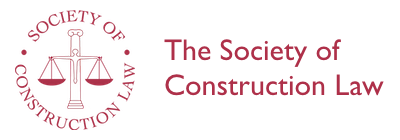Construction and 'Neighbour Risk' - Common Law Variants
Philip Britton
October 2018
The paper is a completely revised and much extended version of Paper D170 (July 2014). It considers the many situations in which the law may support a neighbour in imposing limits on the theoretically unlimited freedom of action of an owner or developer close by, who wishes to undertake construction. All these are - or may be - scenarios in which a construction project is subject to 'neighbour risk'.
The paper's main objective is to answer a pair of linked questions:
- How, and how well, does the law strike a balance between construction works (in their widest sense) and neighbours?
- What conceptual tools does it use to do this, what range of remedies does it offer and how (and where) can these be obtained?
This requires a look at the law of tort, in its specific role as protector of those who own or occupy land, as well as at key features of land law in a common law context, in the paper's sections 2 and 3. Section 4 looks at the impact on construction of public law regulation, notably via the planning system; and the interaction of this with land law. Sections 5 and 6 below offer a special focus on damage to buildings and structures from construction work nearby, seen through the legal lens of 'the right to support'. Such situations reveal some interesting legal complexities, as well as striking variations of approach between the different common law legal systems considered (English, Irish, Australian, New Zealand and others). They are also one of the most expensive manifestations of 'neighbour risk'; thus apparently worth a fight, if need be in court, as section 8 explores. Possible remedies under private law, and the conditions and procedures for obtaining them from a court or tribunal, follow in section 9.
The paper ends with three case-studies as Appendixes: from England (urban development in nineteenth century Birmingham), New Zealand (a fight in the 1980s between neighbour and developer next door) and Australia (private and public law controls on development in a twentieth century suburb).
Introduction - Nuisance: two key English cases- The private law background: rights and duties- The public law background: regulation- Rights of support: English law - Rights of support: alternative approaches - Assessing and managing 'neighbour risk'- The worst-case scenario: a live dispute - Civil judicial remedies - Conclusions - English case-study: Selly Park and the Dolphin covenants - NZ case-study: Oriental Bay and North v Wright - Australian case-study: Barry Humphries and restrictive covenants
The author: Philip Britton LLB BCLis a former Director and Visiting Professor, Centre of Construction Law & Dispute Management, Dickson Poon School of Law, King's College London; also a former Senior Fellow, Melbourne Law School.
Text: 246 pages
